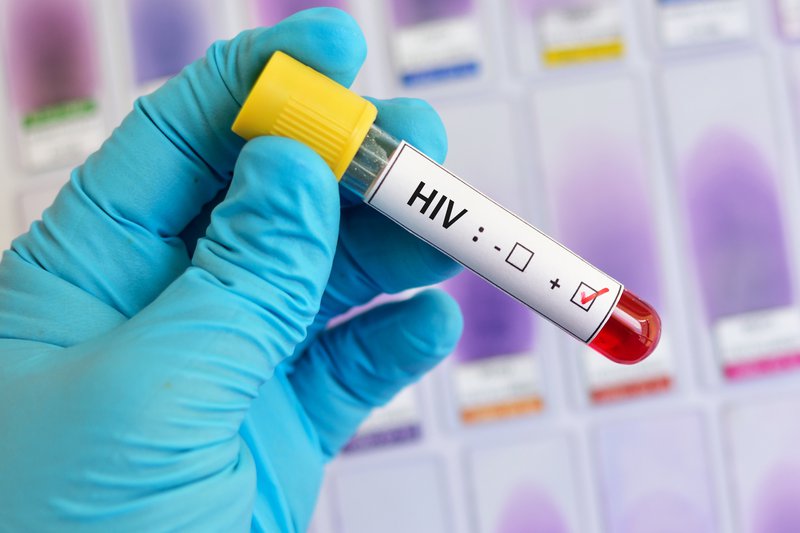Mathatisi Sebusi
FEMALE sex workers and men who have sex with other men are the largest affected group’s in Lesotho’s prevalence rate.
Female sex workers constitute a much higher prevalence of 71 percent while gay men represent 32.9 percent of the National HIV prevalence of 22.7 percent.
Female factory workers, male clients of sex workers, herd boys, and adolescents, who contract the disease via mother to child transmission, were also among the affected vulnerable population groups who faced a higher risk of HIV infection.
This was all revealed by the chairperson of the National AIDS Commission, Reverend Ntokwenzani Xaba, on Friday during World AIDS Day commemorations.
World AIDS Day is observed on December 1 every year. It is a global movement to unite people in the fight against HIV and AIDS.
This year’s theme is “Let communities lead”.
Reverend Xaba said, while the country had attained the UNAIDS 90-90-90 targets, children and men were being left behind in the natinal HIV response.
He said the high rates of mother-to-child transmission and lower viral suppression rates in these population groups was unacceptable.
The UNAIDS 90 90 90 targets states that by 2030, 90 percent of people should know their HIV status, 90 percent of people who know their status should be on treatment and 90 percent of people on treatment should have their viral load suppressed.
Rev Xaba said the country had an alarming HIV prevalence rate where one out of five adults lived with HIV.
“The country has more infections per 100 000 people than other countries such as Namibia, Botswana and eSwatini. Women and adolescent girls continued to exhibit higher HIV prevalence compared to men and boys in the general population,” Reverend Xaba said.
To address these, the government of Lesotho had launched the Lesotho HIV Strategic Plan for 2023-2028 which will guide the country towards achieving its vision of a Lesotho free from new HIV infections and AIDS related deaths.
Rev Xaba said the strategic plan had three goals which included delivering equitable access to evidence-based, and people-centred HIV services, breaking down structural and social barriers to achieve optimal outcomes in HIV and STI prevention and management.
He said another goal was ensuring a fully resourced, sustainable, and efficient HIV response integrated into systems of health, social protection and pandemic settings.
United Nations Resident Coordinator, Ms Amanda Khozi Mukwashi, commended Lesotho for its efforts in fighting HIV/AIDS. She said the Kingdom was now recognized as one of a few countries that had successfully controlled the HIV epidemic. More still needed to be done though.
Ms Mukwashi said Lesotho, like a few other countries in southern Africa, was now being challenged to transform its HIV response and achieve sustainable impact by 2030 and beyond. This required political and financial commitments to maintain a response that was efficient and effective.
“It will determine if the close to 300 000 people living with HIV continue being virally suppressed, enjoying healthy, productive, and full lives,” she said.
“It will determine whether the current 4 800 new infections per year are interrupted and further controlled. In short it will determine if we sustainably achieve and maintain zero new HIV infections, zero AIDS related deaths, and zero discrimination by 2030 and beyond.”
She said the theme for this year’s commemoration, “Let Communities Lead’ was a very fitting theme because organizations in communities affected by HIV had been at the centre of the HIV response from the very beginning of the HIV pandemic.
She said globally while 82 percent women aged 15 years and older had access to treatment, only 72 percent men in the same age group had access.
Ms Mukwashi said there was thus a need to challenge gender norms that prevented men from timely seeking health services, in addition to expanding services that were friendly and accessible to them.
“For children, the situation is even more disheartening. While over three quarters of adults living with HIV are on antiretroviral therapy, just over 55 percent of children living with HIV are on this life saving medicine,” she said.
“It is unacceptable ladies and gentlemen, that with the widely available, affordable, and effective treatment for children, globally we still have nearly 85,000 children dying due to HIV each year, and in Lesotho close to 500 children.”
Added Ms Mukwashi: “We need to overcome these outrageous disparities in access to treatment and ultimately end AIDS in children. No child living with HIV should be denied treatment and we should eliminate the persistent 500 new HIV infections in children (in Lesotho) not by 2030 but as a matter of urgency.”
According to the 2019 Lesotho Global AIDS Response Country Progress Report, 330 000 people in Lesotho were living with HIV, thus putting the country at an HIV prevalence rate among adults of 22.7 percent.
The 2020 Lesotho Population based HIV Impact Assessment (LePHIA) reported 5000 new infections annually in Lesotho, with adolescents and young people accounting for 80 percent of these infections.
UNAIDS Global AIDS update released in July 2023 said countries that were succeeding in containing HIV/AIDS had put people and communities first in their policies and programmes to combat the pandemic. They were already leading the world on the journey to end AIDS by 2030.
The update disclosed that the AIDS response was drawn back by inequalities in access to treatment between countries; between men and women; between adults, young people, and children and in key populations.
A World Health Organisation update released on 13 July 2023 shows that HIV remained a major global public health issue, having claimed around 40.4 million lives so far with ongoing transmissions in all countries globally.
According to the update, some countries have reported increasing trends in new infections when previously on the decline.
There were an estimated 39.0 million people living with HIV at the end of 2022, two thirds of whom (25.6 million) were in the WHO African Region.
In 2022, 630 000 people died from HIV-related causes and 1.3 million people acquired HIV.



